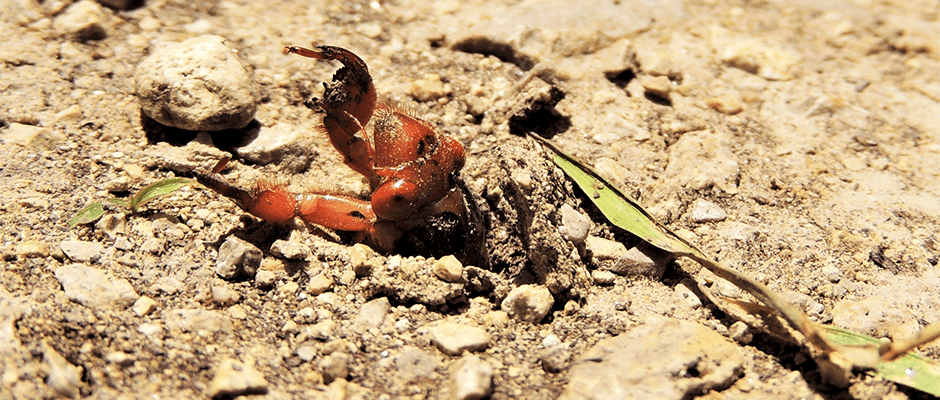Share this article
Don’t forget the soil fauna
When U.S. Forest Service Southern Research Station research ecologist Mac Callaham and post-doctoral researcher David Coyle, D.B. Warnell School of Forest Resources, were teaching a class together at the University of Georgia, they decided to involve their students in writing a manuscript. The paper aimed to call attention to a subject that in recent years has received too little love from the scientific community: soil fauna and how various kinds of environmental disturbances affected soil invertebrates.
The students, listed as co-authors in the published study, were tasked with reviewing the available literature. After reviewing and editing, Coyle and Callaham published the paper in Soil Biology and Biochemistry.
“The disturbances that nature and humans are throwing at ecosystems have an influence on soil fauna,” says Callaham. “This is going to play out on the microbes. Yet no one’s really paying attention to that right now.”
Callaham, who has been studying soil fauna for the past 25 years, noticed a disturbing trend in the scientific literature. Researchers were focusing much more on the microbes in the soil than on any of the other creatures that live in it.
When they used indexing services to look up terms like “soil microbial ecology” and “soil fauna,” the authors of the paper confirmed their fear — lots of new studies pertaining to the former, but only a few about the latter. “That’s detrimental to gaining an understanding of what’s really going on down there,” Callaham says. “Soil fauna affect the microbial components of the soil.”
As there are more environmental disturbances and their impacts get bigger, how will soil fauna respond? The study, which offers some answers to this question, splits soil fauna into two categories. Epigeic organisms are those that live on the surface and upper layers of soil (think snails, millipedes, and ground beetles). Endogeic critters (e.g., earthworms and insect larvae) dwell below it. Often, the two responded differently to disturbances.
With fire, belowground fauna have an advantage, as the organisms on the surface that can’t retreat to deeper cooler soil die from exposure. Fire also consumes part of their habitats and food resources.
But fire might have some benefit in terms of controlling invasive soil fauna like certain surface-dwelling earthworms – not because it kills a lot of the adult earthworms, but because it harms the viability of their cocoons.
The rather surprising positive effect floods can have on diversity within a species is another avenue to explore. While the abundance of ground beetles, for example, decreased after a flood, species diversity tended to increase.
The study goes on to describe more of these impacts, including the various effects of wind, invasive species, and climate change. The findings are often complex and beg many more questions. They highlight the fact that there is still much we don’t know about the creatures that live on and in our soil.
Perhaps soil fauna have always been destined to suffer from an “out of sight, out of mind” mentality? Not so, says Callaham. “Twenty or thirty years ago,” he explains, “there was a lot of scholarship on the influence of soil fauna on microbes. The focus shifted with the advent of new molecular techniques and technology.”
Scientists suddenly had access to a host of new, high-tech tools that they’ve been able to use to tackle questions and make advances in microbial ecology. But soil fauna don’t deserve to be sidelined as a result. Why not use those new tools to shine some light on some of these older fauna-microbe interactions as well?
Read the full text of the article.
For more information, email Mac Callaham at mcallaham@fs.fed.us.
Header Image: A periodical cicada nymph emerging from belowground after 17 long years of subterranean life. Periodical cicadas spend a few weeks flying around as adults, but the rest of the time they are soil fauna. ©Roberto Carrera-Martínez








